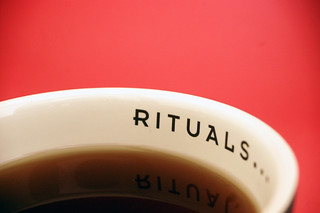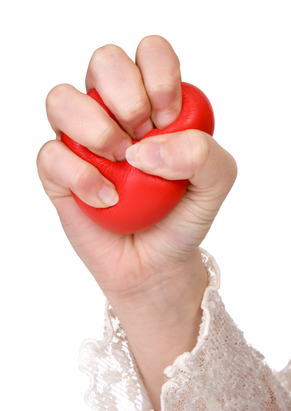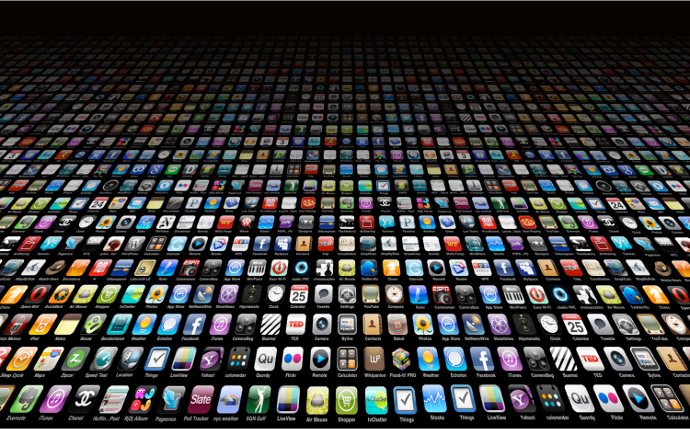Be still my heart: stress, women and heart disease
Heart disease. I have been writing about it for years. And the news doesn’t get much better. According to the American Heart Association, heart disease kills approximately one woman every minute. More importantly, despite the great strides that have been made on the research, treatment and even education fronts, 90% of women in the U.S. have at least one risk factor for heart disease. Yikes!
Allow me to share one of the greatest risk factors, one that you might not be aware of:
Mental stress.
If you are a regular reader of Flashfree, you know that stress can affect mood, sexual desire and symptoms of menopause. And not surprisingly, the association between mental stress and heart disease is well established. However, new study findings published online in the Journal of the American College of Cardiology suggest that mental stress might actually take a greater toll on women’s hearts than on men’s.
In the study (which had originally been designed to assess the impact of an antidepressant on stress-induced heart issues,)male and female participants were exposed to mental stress exercises, including one designed to induce anger. The researchers also evaluated factors that would indicate how the well or poorly the heart was functioning in relation to stress including blood pressure and heart rate as well as reduction in blood flow. Mind you, of the 310 people participating in the study, only 54 were women and this small sample does create certain limitations when it comes to interpreting the findings. However, the report shows that during times of stress, 57% of these women experienced reduced blood flow to their hearts, versus 41% of men. This is not to say that the men dodged the bullet; indeed, men had greater increases in traditional measures such as blood pressure.
Another important finding was the impact of mental stress; women tended to express more negative emotions and experienced a decline in the positive. And, the researchers say that they also observed differences in how the platelets behaved. In the bloodstream, platelets are responsible for stopping bleeding and in aid in clotting. However, they can also clump together to block the flow of blood when the vessels are damaged. In response to mental stress, not only did the blood platelets react more strongly and clump to a greater extent in women than in men, but the women had roughly twice the odds of this occurring.
The researchers say that the findings highlight gender differences in heart disease risk but also suggest that available risk prediction tools may fall short; this is because they don’t measure the full spectrum of mental-stress induced physical and psychological changes. What immediately comes to mind is the recent app launched by the North American Menopause Society, which in addition to promising a more seamless exchange of information and resources between provider and patient, also offers access to cardiovascular risk assessment. That aside, it’s definitely time to change the paradigm. Recent data suggest that death rates from heart disease in women have declined BUT the number has exceeded that of men for the past 20 years. By teasing out the why and what, there may be an avenue to change the narrative. Today, that avenue is mental stress.
The key message is to to be mindful of stress before it stills your heart and steals your life.
Read MoreGuyside: feeling tension over hypertension
Newsflash: What’s the latest on soy?
Does it or doesn’t it? That is, does soy relieve menopausal hot flashes or not?
The evidence has been less than definitive however, researchers now say that trials examining the benefits or lack thereof of soy in attenuating symptoms may have been negatively affected by significant limitations, such as failing to recognize treatment timing and duration on effectiveness, small numbers of women in the studies and wide variations in how much hot flashes were reduced with treatment. And so, they took another look at the data using a new model, one that allows scientists to actually compare different treatments and evaluate the effectiveness of different factors, including dose, duration of treatment and formulations. This is an important method of analysis and one that could truly be considered a game changer. They say that their findings, published online in the British Journal of Pharmacology, will provide “information for deeper understanding of the efficacy of soy isoflavones on menopausal hot flashes.”
I am going to skip over the science mumbo jumbo and get right to the meat of how they came to their ultimately conclusions:
- Findings were based on an analysis if 16 studies published between 1998 and 2012 enrolling over 1700 subjects.
- In terms of duration, the effect of soy isoflavones were studied for anywhere from 4 weeks to two years, with a median of 12 weeks.
- In these studies and vis a vis modeling, soy isoflavones were compared to both placebo and estradiol, the latter in terms of how long it takes to reach effectiveness. This last point is important.
And now, the result.
While the effect of isoflavones on hot flashes was superior to placebo, the researchers still observed a relatively strong placebo effect at play. Importantly, however, the placebo effect at play was even higher in trials examining estradiol and hot flashes. The reason? Apparently, women might have lower expectations when it comes to alternative therapies like soy. Yet, there was still another important finding that was teased out by this new modeling:
Soy isoflavones require at least 13.4 weeks to reach at least half of their full level of activity in the body. In comparison, estradiol only needs about 4 weeks. So, when you do the math, at four weeks (which is the usual length of most clinical trials of this nature), estradiol has reached 80% of its peak activity level and soy isoflavones, only 47%. By 48 weeks, soy isoflavones catch up.
Additionally, as I’ve written time and again, there are different components of soy with differing levels of effectiveness. Genestein is the strongest and yet, only three studies specifically looked at soy agents that contained genestein only. So, there was no way for the researchers to break down the findings by components.
Overall, the key takeaway is that it takes longer for soy to reach maximum effectiveness than it does estrogen. So, if we are going to quantify value moving forward, it’s important to account for this significant distinction.
When it comes to soy, it may simply be that slow and steady wins the race.
Read MoreGuyside: the power of ritual
 I’ve mentioned in a previous Guyside that my mother died in August. And yesterday, my brother and I were informed that her house — our house — had sold. For me, it’s been an odd experience. It’s a home my grandfather built in the ‘teens and twenties in a small coal-mining town. My mom and her siblings grew up in that house; after getting married, my dad moved in, and my two brothers and I grew up there. Soon, I’ll be flying home (an ironic phrase, now) to do the final paperwork and hand off the house to its new owner.
I’ve mentioned in a previous Guyside that my mother died in August. And yesterday, my brother and I were informed that her house — our house — had sold. For me, it’s been an odd experience. It’s a home my grandfather built in the ‘teens and twenties in a small coal-mining town. My mom and her siblings grew up in that house; after getting married, my dad moved in, and my two brothers and I grew up there. Soon, I’ll be flying home (an ironic phrase, now) to do the final paperwork and hand off the house to its new owner.
Menopause? There’s an(other) app for that!
[Image: http://enpaperblog.com]
Did you hear the news? The North American Menopause Society (NAMS) is gearing up to launch MenoPro, the first ever mobile app designed for use by clinicians and patients. NAMS representatives explain that the new app is geared toward both clinicians and patients, and will streamline the decision making process. The two-mode application will evidently allow users to access NAMS resources and a heart disease risk score calculator and will also encourage women to communicate and work with their clinicians to identify and individualize strategies to manage troublesome menopause symptoms. The app will be demonstrated this week in Washington, DC at NAMS’ annual meeting.
MenoPro is not the first app to hit the market; you may recall the ‘myPause’ menopause tracker. The distinction offered by the NAMS app, however, is that it has an extra feature that offers clinicians the option of emailing summaries of the conversation as well as information handouts on such topics as treatments for hot flashes and night sweats and genitourinary symptoms; links to additional resources will also be available.
NAMS says that it developed the app without industry involvement, which is terrific. Yet, it is important to mindful that many of the resources contained in the NAMS database have been sponsored by industry. Moreover, an app is only as good as the person who actually uses it. According to a 2010 Pew Internet and American Life Study, only 20% of mobile phone users utilized their devices to look up health information and a mere 9% used mobile to manage or track their health regularly. Updated Pew data from 2012 showed a slight increase in the percentage of users looking up health information on their phones (to 31%), but only 9% said that they received text messages to track their health and a mere 19% have at least one health app on their smartphone. These numbers are pretty dismal and imply that the majority of people are not tracking their health via mobile nor do they appear to have much interest in doing so. Perhaps the fact that Apple now has skin in the game may change that paradigm.
I applaud NAMS for taking the steps needed to provide women and clinicians with an easier way to communicate and exchange information about menopause. Yet, I can’t help but remain skeptical about the utility of the app as well as the value of the resources that have industry involvement. As of this writing, Apple has not yet signed off on the app so there is no information on when it will actually be available. I’m inclined to withhold final judgement but NAMS has traditionally condoned the medicalization of menopause and I can’t imagine that the app will alter this point of view.
Read More
Reinventing Women: Unfolding in divine time – meet Laura Ann Klein
Life never quite unfolds as we plan. And it seems that sometimes, if not often, the universe has a different idea than we do about timing. This is the story of Laura Ann Klein’s reinvention, a work in progress, if you will. But then again, we are consistently on a journey and our work is always in progress, right?!
When Laura Ann first answered the most recent open call for stories of reinvention, she did so with a response that has resonated ever since I first laid eyes on it: “calendars for change don’t always match the Universe’s.”
She is in the midst of yet a third reinvention in her life, this time, one that focuses on altering the course of her 31 year nursing career. While a few recent financial curve balls have caused her to delay her plans, she remains committed to her journey to return to leave her nursing career, return to school and establish a passive income stream. The impetus for these changes is surprising. She points to a a fractured vertebrae in her back, explaining that the injury should have left her wheelchair-bound or even dead, and that it was a wake up call to action for a woman who had been coasting in her comfort zone for far too long.
As a nurse, Laura Ann works telephonically with catastrophically ill patients. She says that all of them have one disease or another that will eventually lead to the end of their lives. “Many of them have invested huge amounts of time in jobs that suddenly feel meaningless to them,” and that experience of caring for such ll patients coupled with a consciousness altering injury amplified a truism: “life is fleeting and we must revel in it and do our heart’s desire and passion as we move toward our inevitable ends.” The result for Laura Ann has been a renewed ability to ask for help, seize the day and capture joy in everything, no matter what.
The path ahead is paved with uncertainty. As a divorced mother of two adults sons — one out of college and one still in — Laura Ann knows that the financial assistance that she can offer is limited. Despite her enthusiasm for change, a passive income is an option that requires a bump in the timing department. Mind you, this does not mean that Laura Ann has given up; she stresses that she remains committed to her reinvention. Her advice to others? “For the love of all that is sacred in your heart, pay off your debts, cash out and live your dreams. Find your bliss and the money will follow.” More importantly, don’t perpetuate a disservice by continuing to do the same thing day in and day out without a firm commitment. “Our time is so short on this earth and we’re not meant to suffer under the weight of a job that we hate or a career that we can no longer draw any passion for.”
Laura Ann reminds herself daily that ‘it’s all unfolding in the divine time.’ The Universe works in mysterious ways and for Laura Ann, it has provided her with “big medicine” pointing her in the direction of the next path. Jumping off a platform into the water, bottom down, a move that left her injured with eyes wide open, might have been one of the best things that has ever happened to her. She says that it’s critical to do whatever it takes to leave your comfort zone.
Close your eyes. Jump, unfold into the divine.
About Laura Ann…
When her ‘nest’ emptied a few years ago, Laura Ann thought that she’d sell her home in the suburbs and move to an 800 square foot apartment in the middle of a big city downtown. But, a yellow house appeared in her horizon and she landed instead on the outskirts of a ‘big little town.” Everything changed, sweeter than ever. Check her out at http://yellowhousedays.com and https://www.facebook.com/Yellowhousedays.
Read More
A crying shame?
I recently picked up the telephone to a shocking call. A friend had been terminated at his job, and was calling to let me know not to use his work-issued mobile phone or email address.
It was shocking for a couple of reasons. First, even as I head towards 50, I am still naive enough to think that competent, “good” people are never fired. Second, it was only one of a very few occasions on which I can remember my friend choking up.
We men tend to be far less likely to cry than women. A report from the American Psychiatric Association in February suggests that women cry about five times as much as men.
Some point to hormonal differences in men and women as one reason for this difference in teariness.
And others point to the childhood socialization men receive. There’s a reason that the band 10cc had a big hit with their song “I’m not in love” with its iconic “Big boys don’t cry” spoken line. It resonated. And still does.
I’m not much of a crier. I’m more of the occasional leaker. I haven’t had the proverbial “good cry” since my mother’s death earlier this year. I did have one of those after my father died in 2012. But beyond that, I’m more of the person who wipes a tear away, often inspired by a moving performance of a song, than the person who sobs or needs a wad of tissues.











